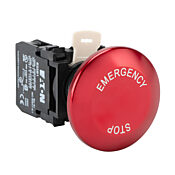Let me preface my comments by saying that I am not an expert in electricity. That is why I had my plans evaluated by an electrical engineer who is also a licensed electrician. He also looked over my control box before I plugged it in. He specifically told me that I did not need to control both limbs of a 240 vac circuit. He did instruct me to install a dpst switch on the circuit. I would have gladly stayed out of this pissing contest but I was quoted out of context:
"stevehaun; reply #56 like bakins,"I run one hot directly to the element and the other hot is switched by the SSR..."
Now to brewbeemer's example:
"To rely on reaching over to this DPST "kill switch" while your hung up being electrocuted is a joke! There is no way in hell while your nervous and muscle system are over powered by an electrical shock and still be able to do a normal thinking and body function like flipping that DPST switch."
I agree with your comment.
However, you overall logic on this topic is flawed. If you are being electrocuted by the 240 vac circuit controlled by your DSSR, you would still have to reach over and turn off your PID to stop the electrical shock. This is no different than flipping the DPST switch. I really don't see how using a DSSR is inherently safer than using a single SSR. The only time I have my DPST switch on is when I am heating water or wort. Otherwise the circuit is turned off - no current to either limb of the 240 vac circuit. The PID and SSR is only used to control the circuit when it is turned on. I do not use the PID/SSR to turn the heating elements on and off.
Here is literature from Watlow that shows how to wire a SSR for a 240 vac circuit controlling a heater. They show controlling only one limb of the 240 vac circuit.
http://www.watlow.com/literature/prodtechinfo/files/controllers/ssre_c.pdf
There is nothing wrong with using a DSSR but it is not the only way to control a 240 vac circuit safely.






